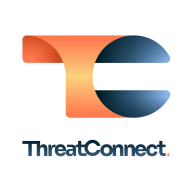

Find out what your peers are saying about RSA, OneTrust, Diligent and others in GRC.
| Product | Market Share (%) |
|---|---|
| ThreatConnect Risk Quantifier | 0.1% |
| RiskLens | 0.5% |
| Other | 99.4% |

| Company Size | Count |
|---|---|
| Small Business | 1 |
| Large Enterprise | 13 |
Prioritize and Justify
Your Cybersecurity Initiatives
RiskLens offers quantitative cyber risk management solutions built on the FAIR™ standard. Leverage RiskLens to understand your risk in financial terms.
ThreatConnect Risk Quantifier transforms cyber risk into financial terms, aiding security leaders in prioritizing defenses and conveying impact in business language.
Risk Quantifier enables security leaders to integrate cybersecurity risk directly into strategic conversations by translating complex cybersecurity threats into clear financial impacts. It helps map MITRE ATT&CK techniques to financial loss, enabling teams to make informed, cost-effective choices. With tight integration with TI Ops and Polarity, it ensures alignment between operational tasks and risk priorities, solidifying the connection between cyber threats and executive decision-making.
What are the key features of ThreatConnect Risk Quantifier?In industries like finance and healthcare, ThreatConnect Risk Quantifier aids in meeting regulatory requirements by providing measurable financial data. For energy sectors, it supports strategic investment in cybersecurity by highlighting the financial risks tied to potential attacks, thereby ensuring resource allocation aligns with potential threats.
We monitor all GRC reviews to prevent fraudulent reviews and keep review quality high. We do not post reviews by company employees or direct competitors. We validate each review for authenticity via cross-reference with LinkedIn, and personal follow-up with the reviewer when necessary.